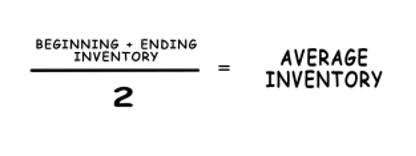
QBO automatically put the starting loan balance into the opening balance equity account, which threw off my balance in the OBE account. I found on this community site that you are not supposed to enter the opening balance while entering the liability because it will always default to the OBE account. So I redid the liability accounts with no starting balance, knowing I needed to enter it somewhere – I just did not know what account Law Firm Accounts Receivable Management to debit.
A Sample Balance Sheet with Opening Balance Equity
- This way, you can send your Balance Sheet report again to him.
- I appreciate your careful approach to resolving the discrepancies between your bank and QuickBooks Online’s (QBO) balance.
- Experience the transformative power of next level accounting.
- It goes back 90 days and then it enters whatever the balance is at that time AND it reconciles that transaction (causing a whole other issue).
- If the user does not have this information, QuickBooks will create an entry in the Opening Balance Equity account to balance the books.
- The opening balance is often called Brought Forward (BF) from the last financial period.
According to modern rules of accounting when there is an increase in the value of capital the particular capital account gets credited and vice-versa. Owner’s capital a/c, Partners capital a/c, Share capital a/c etc., are a few most common examples of capital accounts. Negative numbers in the accounts receivable section of a balance sheet can indicate that the company has overstated the amount of money owed to it by customers. It can also indicate a problem with the company’s credit management policies or a decrease in customer demand. Also, I’d recommend reaching out to your accountant for further advice on fixing the beginning balance issue in QBO, especially when creating a journal entry. There will be a beginning balance in the system if there are reconciled transactions.

Bringing an Opening Balance Equity Account to Zero

The significance of Opening Balance Equity extends beyond mere numbers on a ledger; it ensures continuity and accuracy in financial reporting. By effectively managing this element, companies can maintain the integrity of their financial data, which is crucial for informed decision-making and maintaining stakeholder trust. As you can see, having a balance in the opening balance equity account doesn’t necessarily mean something is seriously wrong. So, let’s hop opening balance equity right on to find out what the opening balance equity account is and why it can confuse you.
How to bring an opening balance equity account to zero?
In QuickBooks, you might stumble upon the opening balance equity account, which can be confusing (especially if you’ve just started to work with the software) as you look at something you didn’t set up. While there’s nothing to worry about, you can’t ignore it since it’s a temporary account you should close. If not closed out, this account signifies an erroneous journal entry in your QuickBooks accounting records, which results in an unprofessional-looking balance sheet. Data entry errors can also cause issues with the opening balance equity account. For example, if a fixed asset was entered as an expense, it can cause the opening balance equity account to be incorrect. To fix this issue, the bookkeeper should review the data entry process and make sure that all accounts are entered correctly.
thoughts on “Blog Series 5 of 5: Common QuickBooks Terms – What is Retained Earnings and Opening Balance Equity”
- It plays a vital role in tracking the equity incorporated during the initial setup of your books.
- This difference is often due to an incorrect opening balance.
- We’re here to assist you with any aspect of QBO that you find challenging.
- I just want to see one line on my balance sheet , with the carried forward balance showing on it.
- Normally that credit books to income or sales or something because you made money, but when setting up a bank account that amount comes from the owners.
In this case, they might be accounts receivable or accounts payable. We are your trusted partner on the path to financial success. With our expert team of dedicated professionals, we are committed to providing top-notch accounting services that will empower your business to thrive. I appreciate your efforts and time following the suggested resolutions on how to balance your accounts, CrazyKZ777. I’ll chime into this conversation and share some information about the Opening Balance Equity (OBE) account in QuickBooks Online (QBO).
- Feel free to reach out to the Community to ask for assistance regarding your bank transactions.
- The balance sheet is a financial statement that shows the company’s assets, liabilities, and equity.
- At the beginning of a new accounting period, such as a new month or year, you typically have account balances from the previous period, representing the financial position of your business at the end of it.
- The final step of this journey is to create equity accounts and assign balances to them.
- What is the account you would debit as all the transactions are not being brought forward.
- You can quickly fix some of them, while others require more effort investment, as you need to first investigate their nature.
- The equipment is listed as long-term liabilities on the balance sheet.
I tried to do my research but I am still having a hard time understanding the function of Opening Balance Equity. From what I’ve gathered, the OBE account is for entering the balance of an account when it first connects with QuickBooks, but beyond that I’m lost. Someone before me did some journal entries in the OBE to get the balance to 0.00, but they put it into Undeposited normal balance Funds and now every time I make a bank deposit, the OBE balance is included with the checks. I just uncheck it to finalize the deposit, but is there a way to fix this? I’m trying to understand OBE so I can know the proper place for these journal entries because they aren’t making sense to me. You will enter the amount of money your business starts with at the beginning of your reporting period (usually the 1st of each month).

Account
At this point, you will see how the balance on your opening balance equity account decreases to the total of your liability accounts. Opening Balance Equity, while useful in QuickBooks land, doesn’t have a place in real-world financial statements. It’s essentially a clearing account, a temporary placeholder used until the other side of the cash can be recorded. If you’re a QuickBooks user and have stumbled across an item called “Opening Balance Equity” in your balance sheet’s equity section, this blog post is just for you. But don’t worry, we’re here to guide you on how to rectify it. Just a disclaimer, I encourage collaborating with other accountants, especially on accounting for the adjustment entries before making significant changes to maintain accurate records.

When setting up a new bank account in QuickBooks, users will be prompted to enter the opening balance. This is the amount of money in the account at the start of the fiscal year. QuickBooks will automatically create an entry in the Opening Balance Equity account to balance the books. Negative opening balance equity can show owing to reasons like incorrect or duplicate entries, mistakes in bank reconciliation, bank reconciliation not done, etc.
